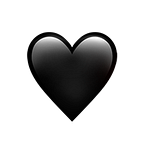Online retailers seize on long-ignored market: Women size 16 and up
It’s about being inclusive of all women
Adapted from a story by The Washington Post’s Abha Bhattarai.
Heidi Zak, the founder of the online start-up ThirdLove, spent three years building her line of bras and underwear to include 59 sizes.
Now they’re testing 15 more, because the demand for larger sizes is rising.
Consider, she says: More than 500,000 women remain on the company’s waiting list for bras in sizes like 44G and 46K.
Zak is among online retailers who are culling customer complaints, preferences and measurements and arriving at the same conclusion: American women, who on average wear about a size 16, need bigger sizes.
Plus-size clothing in the market
Plus-size apparel makes up just a sliver of the clothing on the market. Internet start-ups, armed with reams of data and often more nimble than traditional retailers, are filling that gap.
- Instead of creating “plus-size collections,” they are more often creating the same dress for every size — say, 0 to 36.
- They also are bucking long-held industry notions of what larger women should — and shouldn’t — wear, seizing on an opportunity that mainstream retailers have long ignored.
They’re clearly on to something: Sales of plus-size apparel have been on the upswing.
They grew 6 percent, to $21.4 billion, last year, outpacing the 2 percent growth in the overall women’s clothing market, according to research firm NPD Group.
“A lot of brands think very narrowly about who their customer is,” said Matthew Kaness, ModCloth’s chief executive. “There’s this belief that plus-size customers simply don’t spend as much — but that is only because of a lack of choice.”
A company survey, he says, found that 80 percent of plus-size women would spend more on clothing if items were offered in their size. His sales indicate that, too:
Companies that are changing their tune
- Stitch Fix, an online styling service, recently began offering up to size 24W across 90 brands.
- EShakti, which offers customizable clothing in sizes 0 to 36W, has been steadily increasing its range with promising results: Sizes 14 and up account for 52 percent of the company’s sales.
- At online retailer ModCloth, nearly three-quarters of clothing is available in every size from XXS to 4X.
Modcloth’s ecommerce advantage
Shortly after he took the helm at ModCloth in 2015, Matthew Kaness opened the company’s first pop-up stores. Every day, visitors asked the same question: “Where’s the plus section?”
“And the answer was, we didn’t have one,” Kaness said.
Instead, all sizes, from XS to 4X were grouped together, by style.
“People’s faces lit up when they heard that,” he said. “For a lot of them, that was the first time girlfriends, mothers and daughters, co-workers could shop together in the same store. That was the lightbulb for me.”
A few months later, he removed the “plus” section from the company’s website. In three years, Modcloth, which is now owned by Walmart, has nearly quadrupled its lineup of larger sizes.
“We can constantly add sizes to every item without worrying about, ‘How many extra-smalls and 2Xs should I send to the Tallahassee store for the third week of August?’ ” he said. “That’s where e-commerce has an advantage in terms of serving a wider range of customers.”
But, he added, there are extra costs and labor involved with offering more sizes. A size 6 dress pattern, for example, can be used to create dresses in sizes 0 through 12. But larger sizes require a second prototype, which means the company has to design two pieces, cut two sets of patterns, and fit them on two models.
“Even though online it looks like we’re offering the same dress in size 2 or size 22, everything about those pieces is completely different,” Kaness added.
Narrow thinking within the industry
Designers and stylists say, the industry’s sense of “normal” has long been skewed by runway shows and high-fashion magazines filled with rail-thin women.
“The fashion industry still considers a woman who’s a size 12 or 14 ‘plus size,’ ” stylist and TV personality Robert Verdi said. “I call that normal.”
Eloquii, a trend-driven retailer, is doing its part to make plus-size fashion the new normal.
“The old-school thinking that our customer can’t wear stripes or shouldn’t wear large florals or, God forbid, a crop top to show her midriff — we don’t believe any of that,” chief executive Mariah Chase said. “We sell tons of off-the-shoulder tops. We sell tons of really-short shorts and crop tops.”
Expanding the customer base
When Heidi Zak, armed with an MBA from Massachusetts Institute of Technology, set out to create her own bra company, she was shocked by one discovery: Most of the country’s bras had been based on the measurements of one woman.
Zak hired that woman — Dorothy Galligan, a 1970s cabaret singer who wore a size 34B — before realizing the approach was all wrong.
“I remember thinking, she’s just one person,” Zak said. “What about everybody else?”
Instead of taking one size — 34B — and sizing it up or down, Zak started from scratch, measuring hundreds of women of all sizes and recording their dimensions. She created a Fit Finder quiz, which is still the first thing customers encounter on the company’s website, to gauge such things as body shape, height and breast shape. More than 4 million women have submitted their measurements, providing countless data points for Zak and her team to mine.
The results have been tangible, Zak says: ThirdLove, which started with cup sizes A through E, now goes through size K. The company also offers half-size cups.
“This entire business is data-driven,” Zak said. “And ultimately it’s about one thing: Being inclusive and serving all women.”
